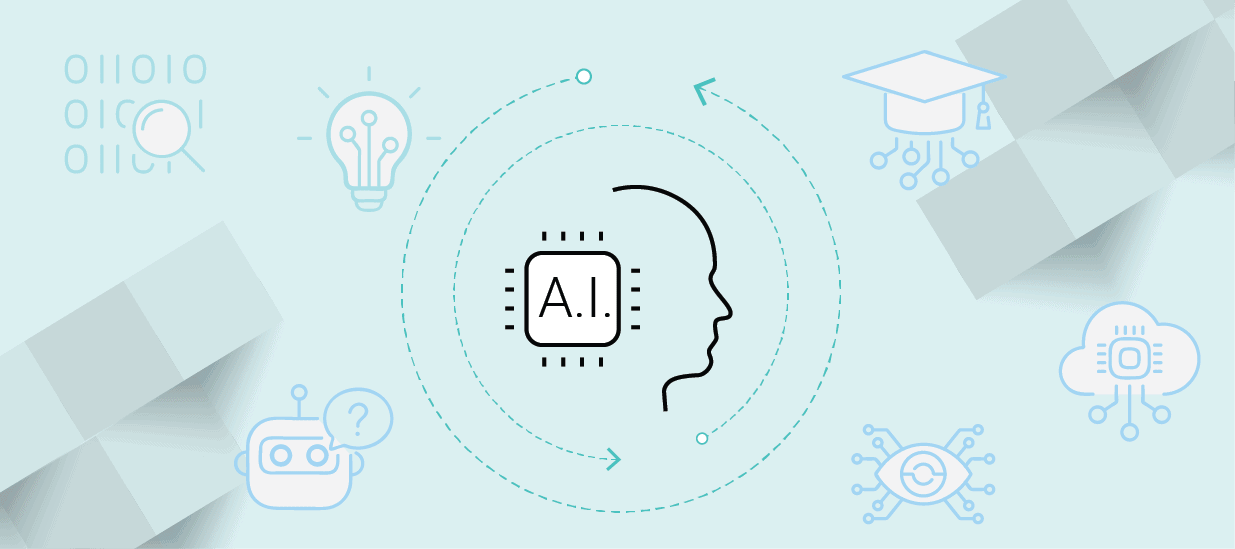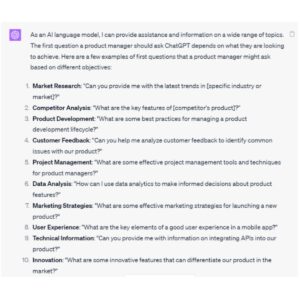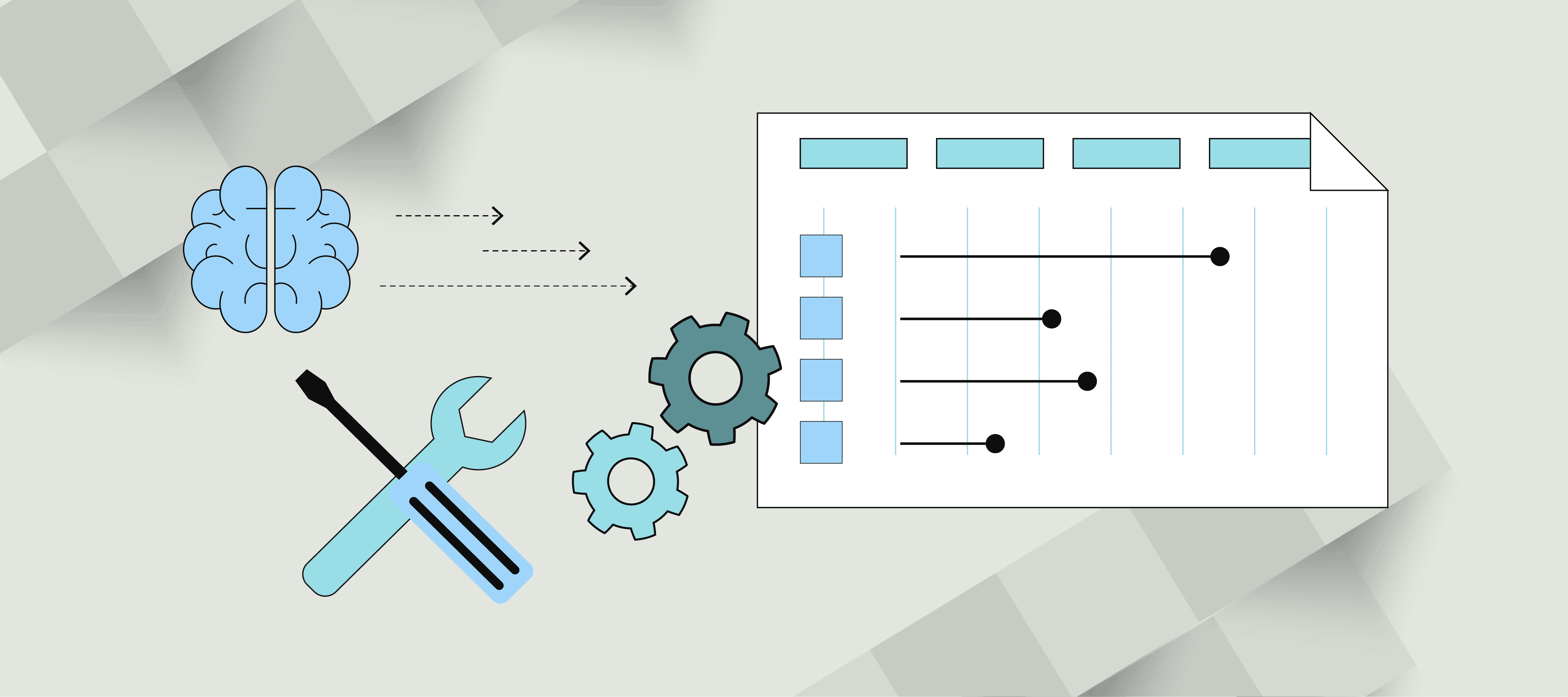AI isn’t merely a buzzword tossed around in tech conferences. It’s a game-changing development reshaping the foundations of how we conceive, create and deliver products. As the ripples of this AI wave touch every facet of the business world, it’s time for product managers to ride the wave or risk being swept away.
In this article, we will chart a clear and manageable path for product managers to begin learning AI. We’ll explore the basics of AI and its importance in product management and provide a roadmap to acquire and apply AI knowledge effectively.
Your Roadmap to Learning AI as a Product Manager
As a product manager, harnessing the power of AI can be a game-changer for your product. Whether automating mundane tasks, providing personalized experiences or making data-driven decisions, AI has many applications that can propel your product strategy to new heights.
So how do you learn about this emerging technology and apply it to your role? Here’s your roadmap.
Start with the Basics
Begin by understanding the fundamental concepts of AI, machine learning, deep learning, and natural language processing. This foundational knowledge will help you understand more complex AI concepts and technologies. (We’ll give you a bit of a primer in the following sections.)
Stay Informed
AI is a rapidly evolving field with new advancements and breakthroughs happening frequently. Subscribe to newsletters, join forums, and follow thought leaders in AI to stay updated with the latest trends and developments. This will help you keep a finger on the pulse of the industry and gain insights into emerging technologies, best practices and real-world applications.
If you’re in Pragmatic’s alumni community, join our newest AI cohort. (If you’re not in the community, complete our Foundations course to earn a free lifetime membership.)
Hands-On Practice
Theory alone is not sufficient when it comes to AI. To truly understand AI and its practical applications, it’s important to gain hands-on experience. Open up different tools and push some buttons. No, really, there’s no better way to start understanding the technology than just picking a few tools and taking them for a test drive. An excellent place to start is ChatGPT.
Understand the Business Applications
As a product manager, it’s essential to understand how to apply AI to solve real-world business problems. Explore different use cases and industries where AI is making an impact. Understand the potential benefits, challenges and limitations of using AI in various business contexts.
Moreover, be aware of the ethical considerations and biases that can arise when utilizing AI, because they can significantly affect product outcomes.
Collaborate with AI Experts
To enhance your understanding of AI and its implementation, build relationships with AI experts. Engage in discussions and seek their insights on challenges they face, emerging technologies and best practices. This collaboration will allow you to leverage their expertise and understand AI-related complexities.
Implement AI in Your Product
Begin implementing AI in small, manageable ways within your product. Identify areas where AI can add value, such as improving personalization, recommendation systems or automating certain tasks.
Continuous Learning and Improvement
AI is a dynamic and rapidly evolving field. To remain effective as a product manager, commit to continuous learning, and adapt your knowledge and skill set to keep pace with the changes happening in AI. This ongoing learning will enable you to drive innovation and make informed decisions about AI integration within your product.
Ethical Considerations
Last but definitely not least, as a product manager, it is crucial to understand and address the ethical implications of using AI.
Ensure that the AI systems you implement are transparent, fair and don’t perpetuate biases. Collaborate closely with AI experts and legal teams to ensure your product meets ethical standards and regulatory requirements. Then, regularly evaluate and audit your AI systems to mitigate potential biases and ensure they are used responsibly.
Why Product Professionals Should Enroll in Our New AI Workshop
Our newest workshop, AI for Product Professionals, will help you check off almost every step in the “getting started with AI roadmap.”
Here’s what you can expect:
- Gain a Deeper Understanding of Generative AI: The workshop provides an in-depth overview of AI, its benefits, risks and how it can be utilized for greater efficiency, problem-solving and staying ahead of the competition.
- Hands-On Learning Experience: Our team of experts designed this workshop to be highly interactive, with hands-on exercises, breakouts and direct feedback on deliverables. This ensures that you gain not only theoretical knowledge but also practical skills that can be applied in real-world scenarios.
- Learning How to Develop AI-Powered Products: You will engage in a step-by-step walkthrough on developing an AI-powered product strategy. This workshop also serves as an introduction to prompt engineering so that you can get the most out of your collaboration with AI.
- Targeted Content for Product Professionals: The workshop is tailored for product professionals, including product managers, product marketing managers and product owners.
- Networking and Learning from Experts: We limit the number of registrations available, so you’ll have the opportunity to network with other professionals and learn directly from experts in the field.
- Flexible and Convenient Format: The workshop is delivered as a single-day offering, including a 10-minute break and a 40-minute lunch break, making it convenient for busy professionals.
- Earn a Standalone Badge: Attendees will earn a badge to demonstrate their new knowledge to employers and future employers on their resume and social network profiles.
A Primer: Understanding the Basics of ChatGPT & AI
Once OpenAi released ChatGPT to the public on November 30, 2022, no one was prepared for the speed it would impact almost every industry. Even more impressive, ChatGPT was by no means the first AI to be open to the public; it is, however, the fastest-growing consumer application in history.
What made it so popular?
The remarkable prowess of ChatGPT lies in its foundation, sophistication, and accessibility.
- ChatGPT utilizes a machine learning model known as a transformer neural network, specifically fine-tuned on a diverse range of internet text. This robust training gives the model wide-ranging language comprehension, allowing it to generate human-like text based on input.
- Unlike its predecessors, ChatGPT has a knack for understanding the context of a conversation. This makes it capable of providing relevant and nuanced responses.
- With an easy-to-use interface and multiple integration options, businesses of all sizes and individuals from different backgrounds can harness its power. This versatility and ease of use have contributed significantly to its rapid adoption across industries.
Diving Deeper into AI
Artificial Intelligence, or AI, is the simulation of human intelligence in machines programmed to think and learn. The term can also be applied to any machine that exhibits traits associated with a human mind, such as learning and problem-solving.
Here is some basic terminology:
- Narrow AI is designed and trained for a particular task, such as voice assistants or image recognition systems.
- General AI has a broader scope and possesses the ability to perform any intellectual task that a human can.
- Machine Learning (ML), A subset of AI where machines are given access to data and use this data to learn for themselves. It’s based on the idea that machines should be able to learn and adapt through experience.
- Deep Learning, a subset of ML, deep learning algorithms are neural networks with many layers. It’s called deep learning because neural networks have various (deep) layers that enable learning. Almost any problem that requires “thought” is a problem deep learning can learn to solve.
- Natural Language Processing (NLP) is a branch of AI that deals with the interaction between computers and humans through natural language. The ultimate objective of NLP is to read, decipher, understand, and make sense of human language in a valuable way.
How does AI work?
Artificial Intelligence (AI) simulates human intelligence through algorithms, data and computing power.
AI systems require data to learn and make decisions. The data can be in various forms, such as text, images, numbers, etc. The more data the system has, the better it can learn. Also, the fact that AI is only as good as its training data is why there are so many conversations about bias and ethics in this field.
Before the data can be used for training, it must often be cleaned and formatted. This step involves handling missing data, normalizing values, and converting data into a form machine learning algorithms can process.
An algorithm is like a recipe for how the AI system will process the data to learn from it. Many algorithms are available, and the choice depends on the type of data and the problem you are trying to solve.
Once the data is prepared and the algorithm is selected, the AI system can be trained. During training, the algorithm makes predictions or classifications on the training data and is corrected whenever it makes mistakes. This process is repeated until the algorithm performs well on the training data.
After training, the model is tested using a different dataset it hasn’t seen before. This helps to evaluate how the model will perform in the real world.
Finally, after deployment, the AI system can continue to learn from new data through feedback loops. This allows the system to adapt and improve over time.
Keep Learning About AI
Generative AI is a complex field full of opportunities. If you want to dive even deeper into understanding how product managers can leverage AI or if you’re hunting for that perfect prompt engineering course, then enroll in our newest workshop, AI for Product Professionals.
Learn more about the workshop and register for an upcoming session.
Author
-

The Pragmatic Editorial Team comprises a diverse team of writers, researchers, and subject matter experts. We are trained to share Pragmatic Institute’s insights and useful information to guide product, data, and design professionals on their career development journeys. Pragmatic Institute is the global leader in Product, Data, and Design training and certification programs for working professionals. Since 1993, we’ve issued over 250,000 product management and product marketing certifications to professionals at companies around the globe. For questions or inquiries, please contact [email protected].
View all posts









